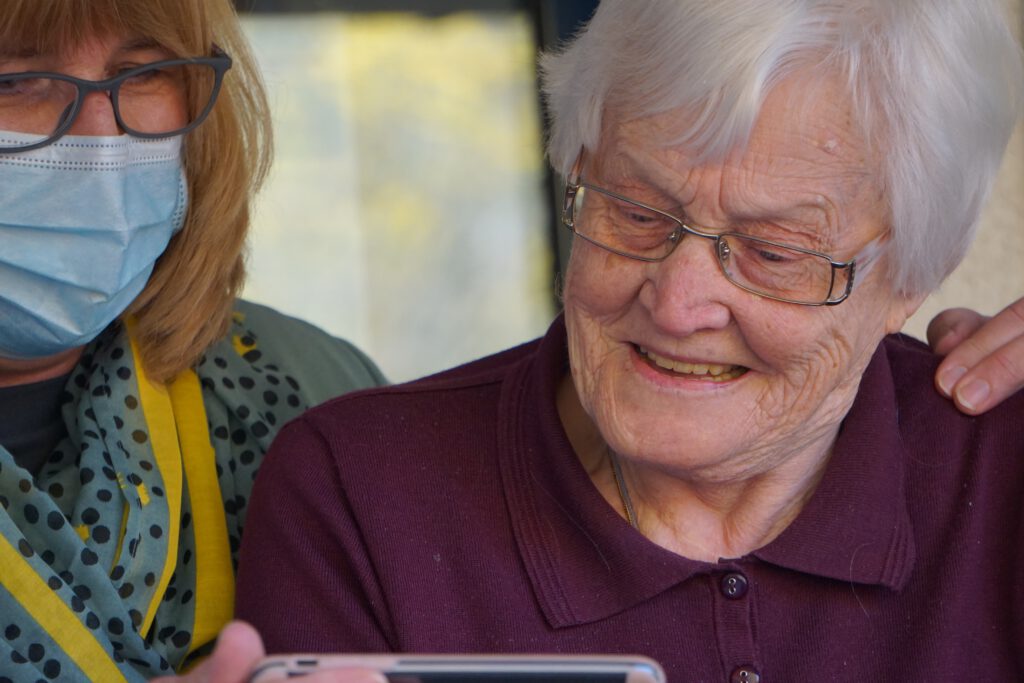Choosing a care or nursing home during the pandemic

Choosing the right care or nursing home for a family member or friend is rarely easy at the best of times. But because of the pandemic, taking a look round a care home has become well nigh impossible.
We have articles on When They Get Older that can help you make choices, both in general terms and from a professional carer’s point of view. But if you can’t actually gain access, how are you going to make that decision?
Taking a virtual tour
It’s highly unlikely that you will be able to visit any homes to find out more during the pandemic.
To compensate for that, some homes have put together virtual tours, and others will take you on a real-time Zoom visit to the home. Not every home has the facilities to do this, but you can check their website, if they have one, or for more information visit comparison sites such as Autumna. The Care Quality Commission, which is responsible for regulating care in England, is now offering some advice as well.
Safety versus contact
Around 420,000 people currently live in care homes. And many thousands more are moving into care every week. That can be a worry for families. Will their relatives be safe in a pandemic?
In some ways, care homes are potentially a safer place to be than elsewhere, in that they are used to managing and controlling infections, even before this latest virus arrived. However, the high number of serious Coronavirus cases within care homes early in the pandemic suggest that something had gone very awry with the process of admitting, caring for and monitoring residents.
With better guidance, testing and management in place, there is hope that residents can enjoy better physical and mental health in the coming months. That will be even more true as vaccines become available to care home workers and residents as a matter of priority.
What concerns you most?
It’s important to decide yourselves as a family what is the best path right now for your relative. Minimising risk until there’s a better chance of surviving the virus, or accepting a higher risk through allowing visitors into the home? There’s no right or wrong answer but knowing what you and you relative consider the priority will help you make informed choices.
While there is guidance from central government, care homes have been dependent to a large extent on advice from local health directors, the own choices about the needs of their community, and the space, budget and insurance restrictions that dictate what they are able to do.
To get a sense of a care home’s approach to balancing virus protection with the need of residents to see family members, you could ask about the following:
- Have family members been allowed into the home since lockdown, and what precautions were taken if so?
- If they haven’t been allowed into the building, have there been alternative arrangements, such as garden visits, window visits (waving through a closed window), the use of ‘pods’, or other ways to bring family together?
- If they do allow visits in some way, how do they manage the need of residents for human touch, especially those who don’t understand the situation?
Life in the care home
With restrictions on family and friends as visitors, it’s useful to know how residents will spend their days. Ask questions about:
- Whether residents are free to visit communal areas or are confined to their rooms
- Who is allowed into the home – hairdressers, activities organisers and others can all help to raise morale and may well be allowed with the proper restrictions
- The availability of technology and the support to use it, so that residents can connect with family through Facetime, Zoom and other services
Moving in – and out
With special arrangements in place during the pandemic, it’s worth asking for a home’s advice on how moving in will work.
- If they arecoming from hospital, how will that be arranged and what virus prevention measures will be taken?
- Wherever they are coming from, will you or others be allowed to help, and how will that be managed? If not you, then what are the options?
If your relative is only moving in to the home for respite care, again you need to know how they are going to be helped to leave.
You might also like to investigate how easy it would be to remove your relative from the home if at a later stage you think they might be happier in another home or back living independently. The Alzheimer’s Society has some useful thoughts on who makes the decision when the cared-for person is unable to do so.
As with every aspect of our lives at the moment, what we can and can’t do to help make choices about care homes is changing all the time. But putting in some research early about the homes you would like to consider will help build a picture of what your family’s needs and desires are, and make decisions a little bit easier.
Photo by Georg Arthur Pflueger on Unsplash

